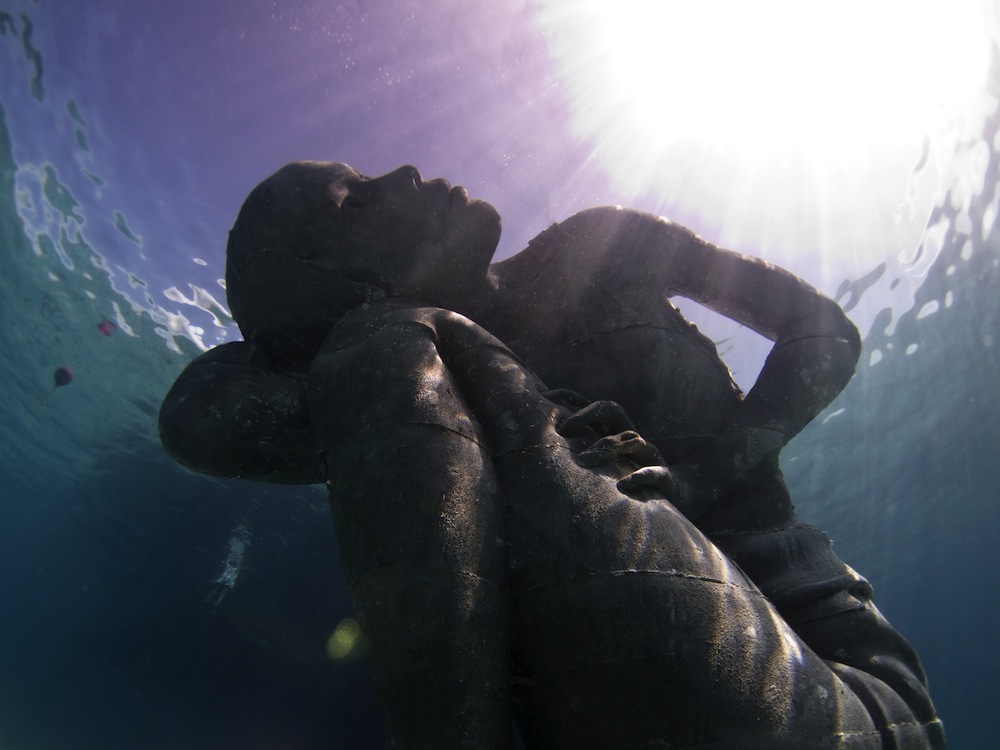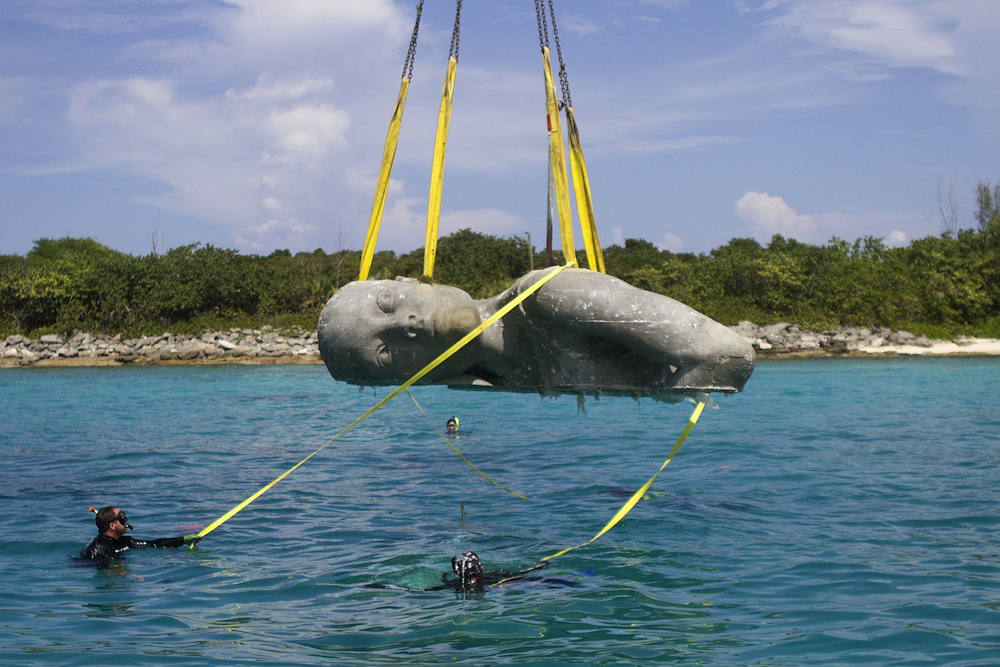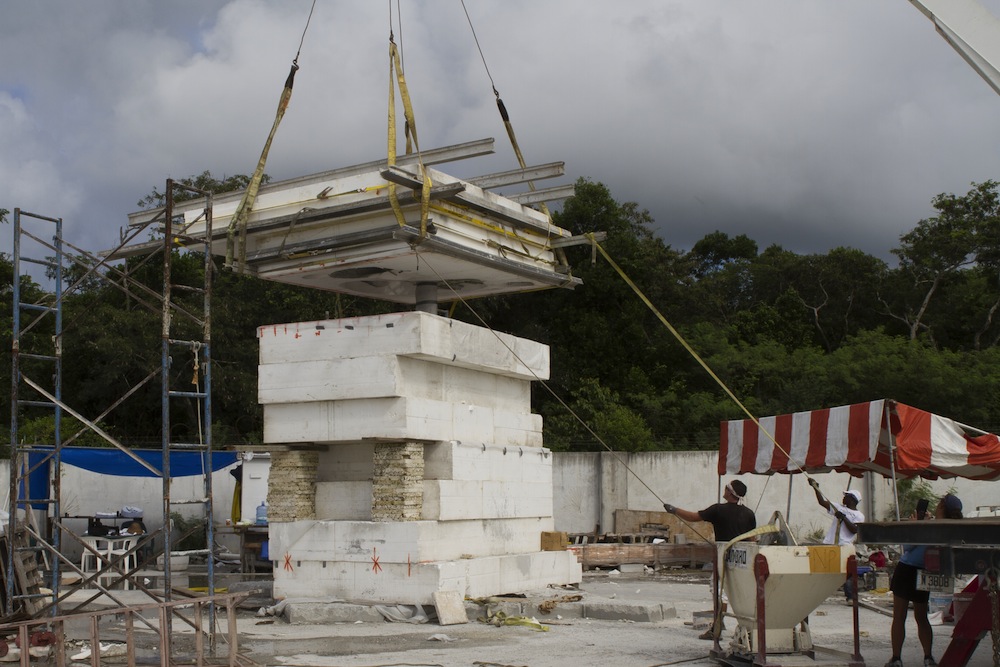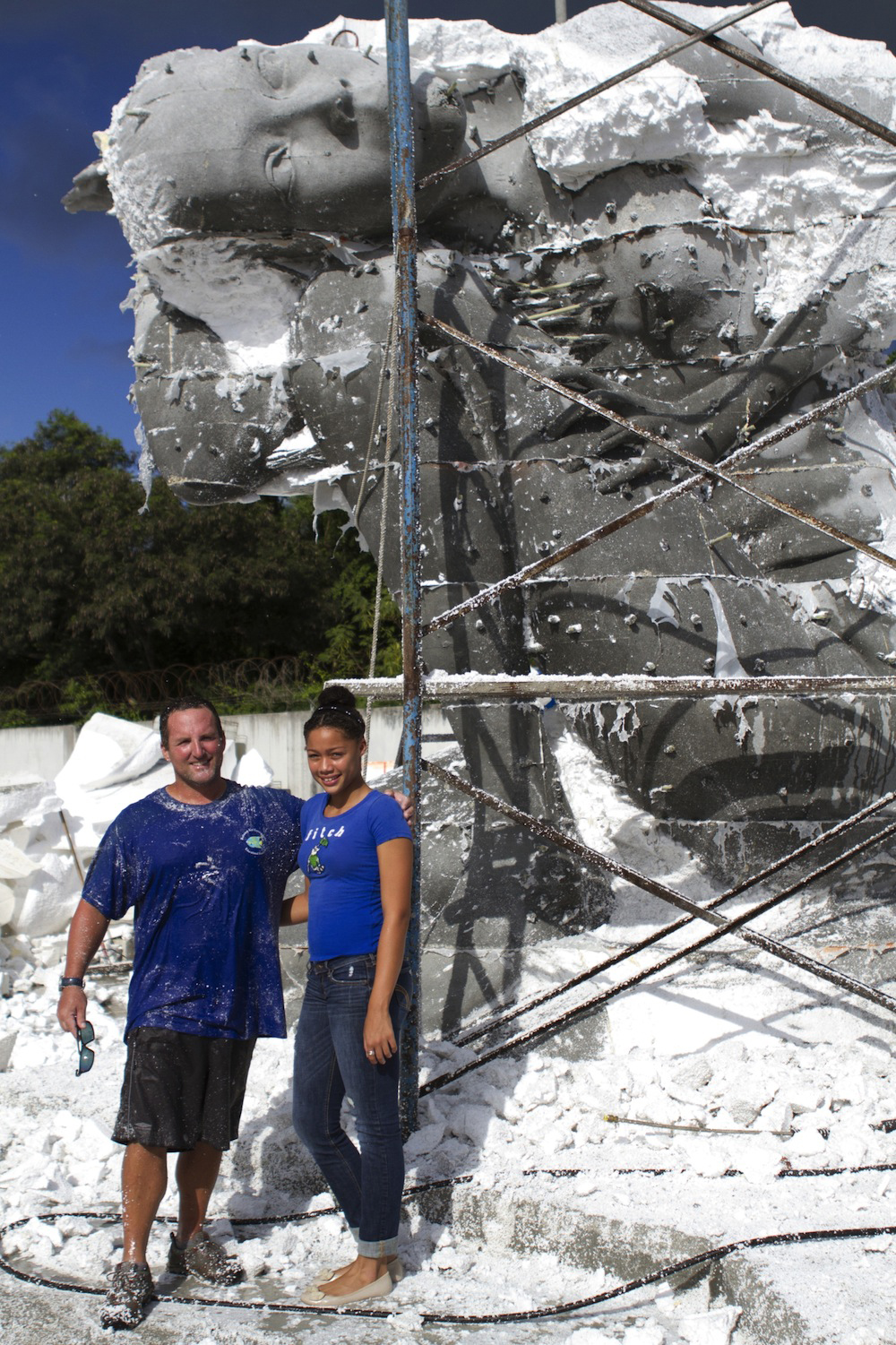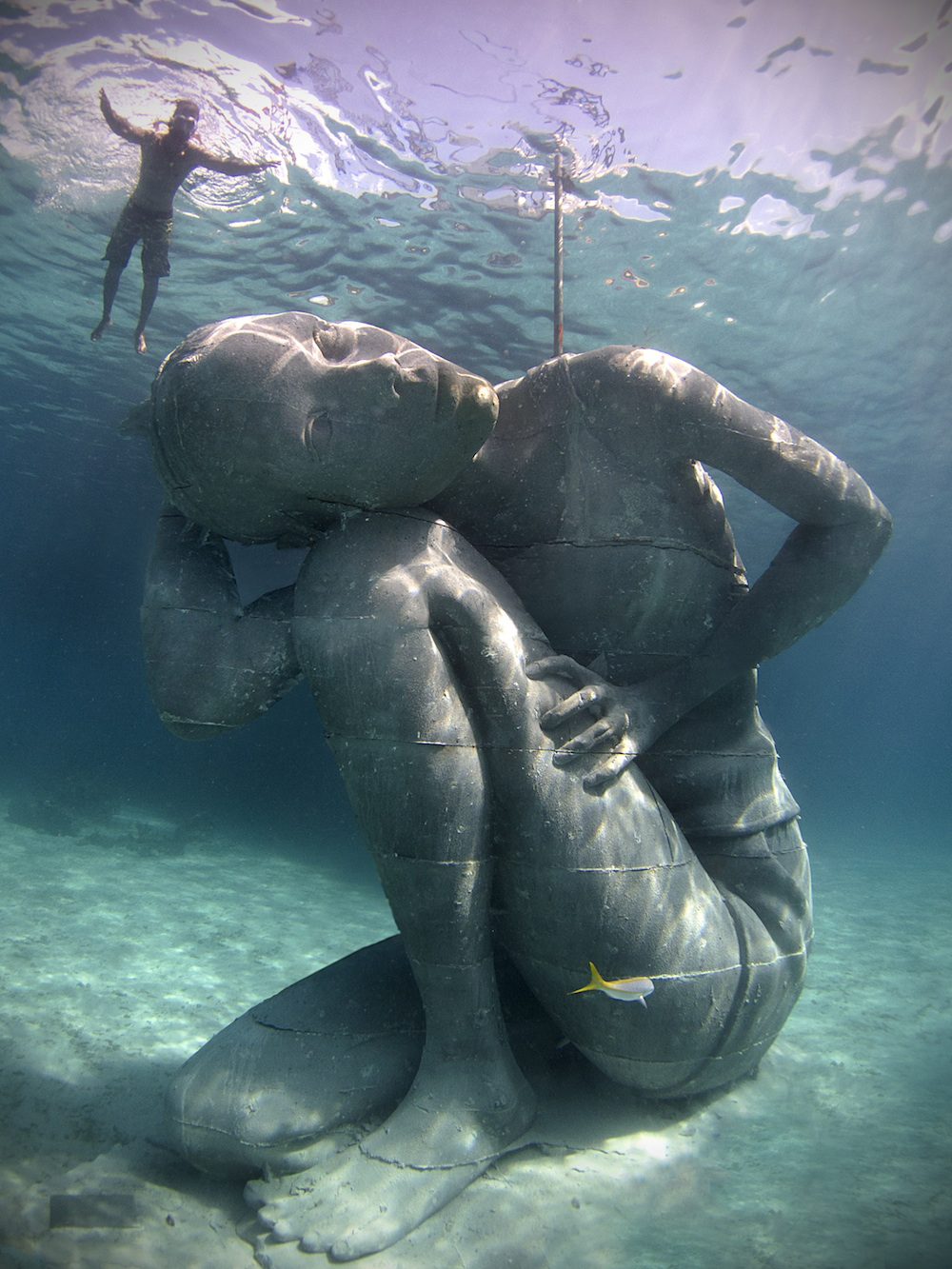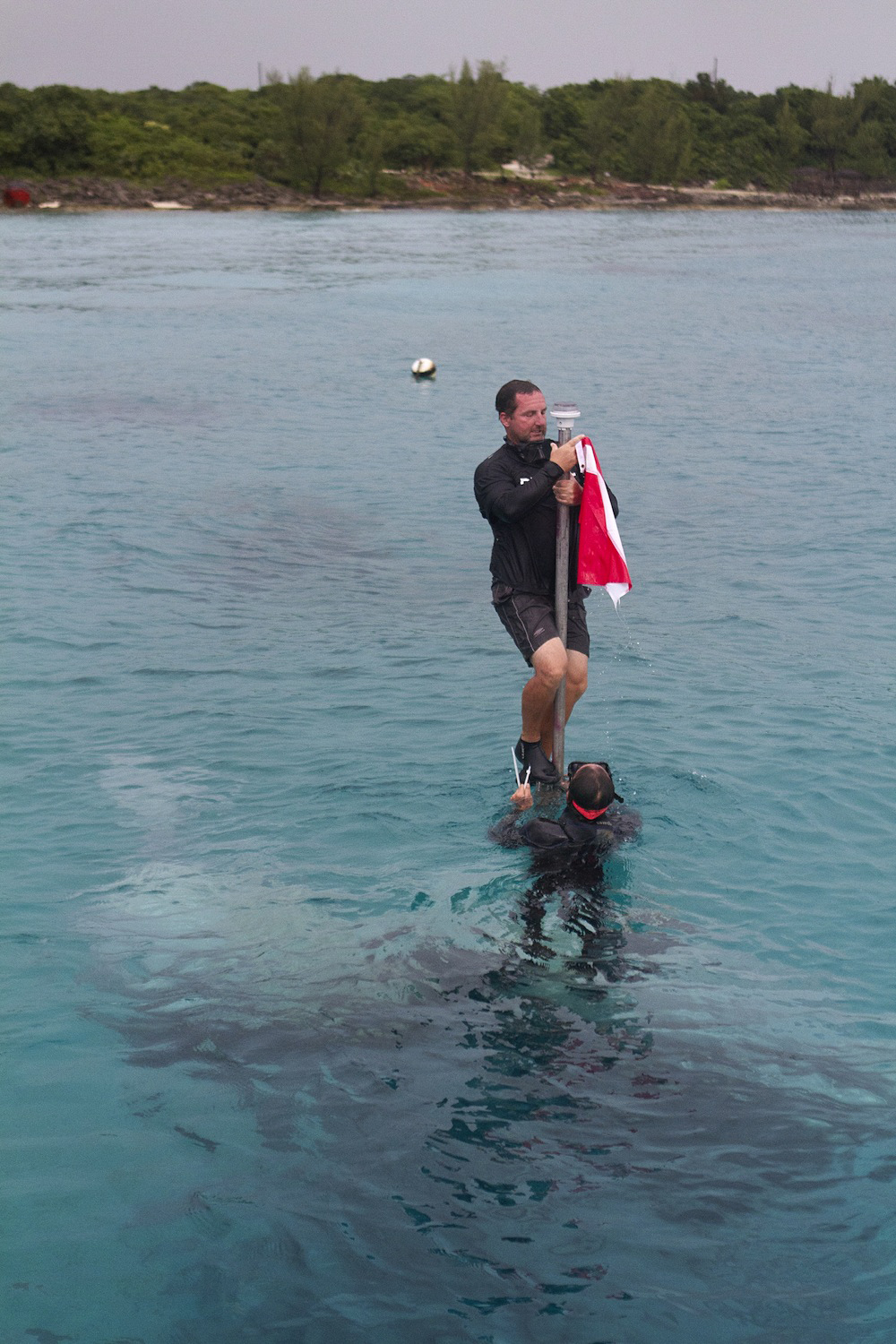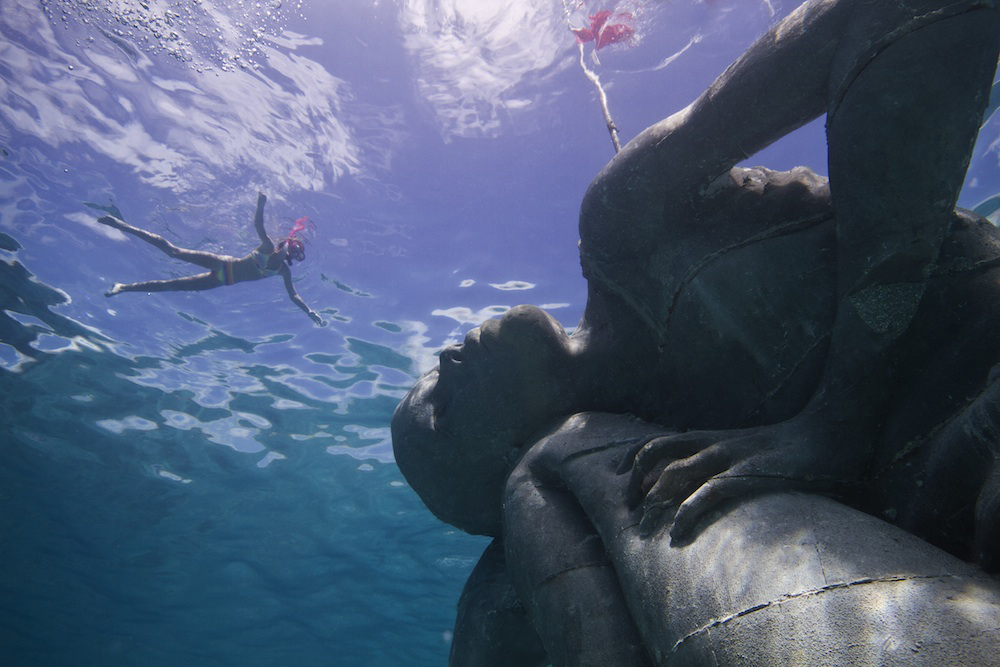An 18-foot (5.5 meters), 60-ton statue called Ocean Atlas, was recently installed underwater off the coast of Nassau in the Bahamas. The giant structure was made by Jason deCaires Taylor, an artist who has created several underwater sculptures. The sculpture of a Bahamian girl carrying the weight of the oceans on her shoulders is meant to evoke the Greek myth of Atlas, a Titan who held up the celestial spheres. [Read more about the giant underwater statue] (Photo credit: Jason deCaires Taylor)
Underwater sculpture
The massive statue, which was installed earlier this month, will soon begin its second life under the seas. Its creator, Jason deCaires Taylor, has designed the statue to become an artificial reef where fish, crustaceans and coral all shelter.
Lowering into the water
The sculpture, which weighs 60 tons, was built in several pieces on land. Those pieces were then lowered into the water with a crane.
Major project
Because the sculpture was so huge, the team had to lower each piece individually into the water. Divers then aligned those pieces and locked them into place under water.
Get the world’s most fascinating discoveries delivered straight to your inbox.
Built on land
The individual pieces of the sculpture were cast in molds, using a special marine-grade concrete that resists degradation in the salty ocean water. Taylor hopes the material will last for hundreds of years. Taylor also avoided using reinforcing metal bars, which are typically found in concrete structures, because the metal can corrode underwater.
Building ocean atlas
Here, the statue stands assembled on land.
Casting ocean atlas
The statue was cast using several molds, such ask the one shown here. Taylor designed the textured concrete to mimic the rocklike surfaces where embryonic coral take root. Eventually, the giant sculpture will become an artificial coral reef where sea life hides.
Construction crew
Building such a large statue was a team effort. Here, the construction crew that worked on the project.
Ocean atlas model
The sculpture is intended to convey the idea that local people, and especially the next generation, can support the and prevent the oceans from collapsing. So he used a local girl named Camilla, shown here, as the model for the work.
Living reef
Though the statue has now been installed, its transformation is just beginning. Because the statue will be an artificial reef, its appearance will change day-to-day as more and more coral anchor to the surface and as a panoply of fish, crabs and other creatures take shelter there. Taylor occasionally seeds the sculptures with coral to speed that process along.
Surface to seafloor
Though Taylor has built many other underwater sculptures, for this sculpture he wanted to create something that used all the space from the water's surface to the ocean floor. As a result, "Ocean Atlas," shown here from below, provides swimmers and divers with completely different views than they would ordinarily have from above. Here, a snorkeler views the sctatue from above. The incredible size of the sculpture will also create multiple habitats for sea life. Crustaceans will probably shelter at the base of the sculpture, while schooling fish will hide from predators inside the voids and spaces.
Locking in place
Here, the team locks the pieces into place for the final installation. Choosing a good location for the statue wasn't trivial. In order to seed coral on the statue, Taylor chose a location that was downstream from a natural reef, so that embryonic coral could drift through the water and anchor on the sculpture.
Inspiring conservation
"Ocean Atlas" may aid conservation, not only by inspiring people to protect the oceans, but also by diverting snorkerlers and scuba divers from nearby natural reefs that have been damaged by overuse. Here, a view of the statue from below.
Another view
Because of the buoyancy of the water, gravity's pull is much weakerk underwater and snorkelers and divers can swim up, down and around the statue, getting views of the sculpture that would never be possible on land.
Follow Tia Ghose on Twitter and Google+. Follow LiveScience @livescience,Facebook & Google+.

Tia is the editor-in-chief (premium) and was formerly managing editor and senior writer for Live Science. Her work has appeared in Scientific American, Wired.com, Science News and other outlets. She holds a master's degree in bioengineering from the University of Washington, a graduate certificate in science writing from UC Santa Cruz and a bachelor's degree in mechanical engineering from the University of Texas at Austin. Tia was part of a team at the Milwaukee Journal Sentinel that published the Empty Cradles series on preterm births, which won multiple awards, including the 2012 Casey Medal for Meritorious Journalism.


